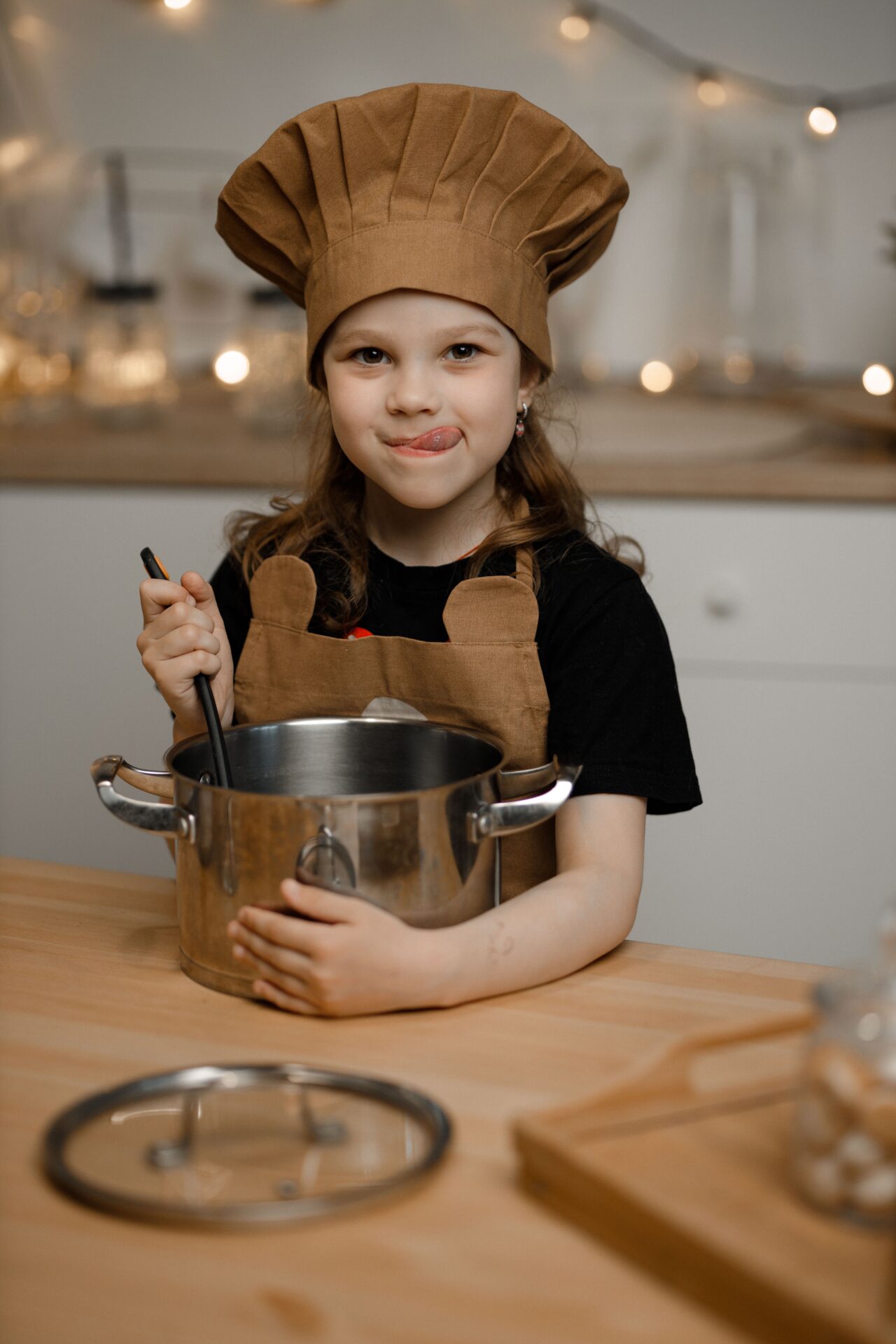Kids in the Kitchen
There is no better way to get kids making healthy choices with food, and learning critical life skills than helping in the kitchen. Your child might even discover a passion for creating meals, and find it leads to a lifelong enjoyment.
Just like anything else, there needs to be rules for safety, but at the same time, enough creativity for your child to learn from their mistakes. Here are some suggestions for helping your child get started in the kitchen!
Practicing Safety
Safety is not just watching your fingers when near a hot oven or a sharp knife. It’s also other basics to help you not get sick. Before starting to prepare any food, remind your child to wash their hands. Things like sampling foods that contain raw flour or eggs, or touching raw meat and licking their fingers should also be warned against, as these foods can make your child sick. Explain that we don’t taste from a spoon that goes back into a pot, because that can spread germs to others, the same way dirty hands can.
When it comes to kitchen tools, demonstrate how to turn a pot handle toward the back of the stove, and which area gets hot on the stove and the pan. There are even kid-safe knives available, which can cut easily through foods, but don’t have sharp blades. This might be ideal for practicing knife skills and safety until your child is a little older.
Being creative and educational
Just because you’ve always done something one way, doesn’t mean your child has to. Part of the fun of cooking is creating new ways, tastes, and dishes. Don’t be afraid to experiment or to let your child try something new. Being creative is also a way to discover a new family favorite.
Out of your usual cheese? Try the one you have! Instead of an apple pie, what if you only have pears? How would that taste? This creative thinking not only boosts brain cells, but it also allows for problem-solving skills practice and hands-on experience. This can even be a time to teach math basics. If your tablespoon measurer went missing, how many teaspoonfuls of sugar do you need? What about learning the science of why something boils, and how hot it needs to be?
Making Mistakes You might end up with a great story when the salt gets used instead of the sugar, or there’s a little too much pepper poured in the pot, but aren’t mistakes a part of learning? Don’t get upset at these mishaps, find a creative way to salvage the food if possible, and use it as a learning opportunity to make sure next time everyone is paying attention, being careful, and measuring or stirring the way they should. In a few years, this mishap will be a side-splitting and hilarious story at a family get‑together.
What next?
Wondering what age to get your tot in the kitchen? Children of all ages can participate and have fun! Eat Right has a list of age-by-age tasks your child can participate in.
As you can see, cooking is more than just fun, it’s skill-building and educational too!
If you need some inspiration, how about making a few of Maggie McNair’s favorite snacks?


